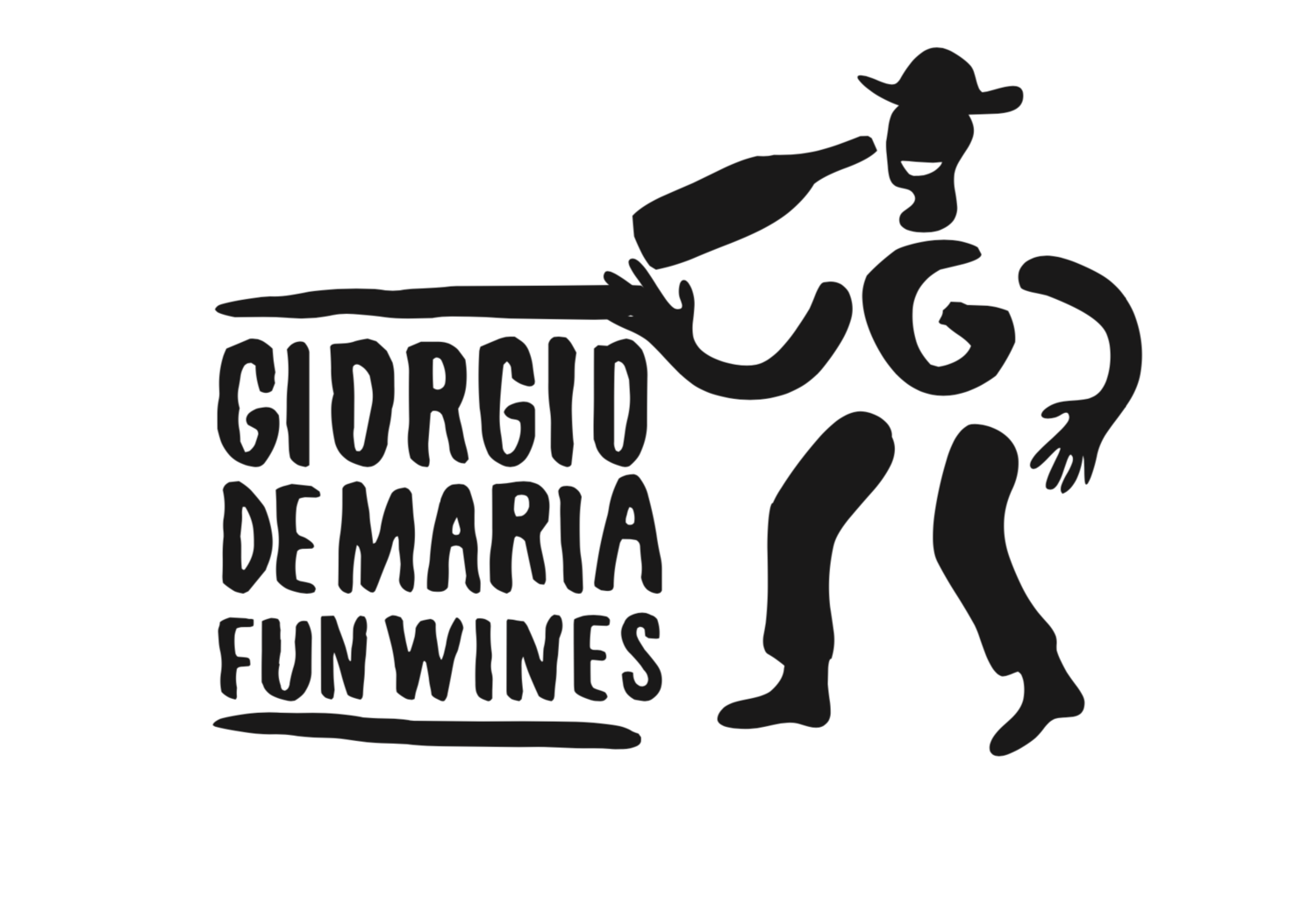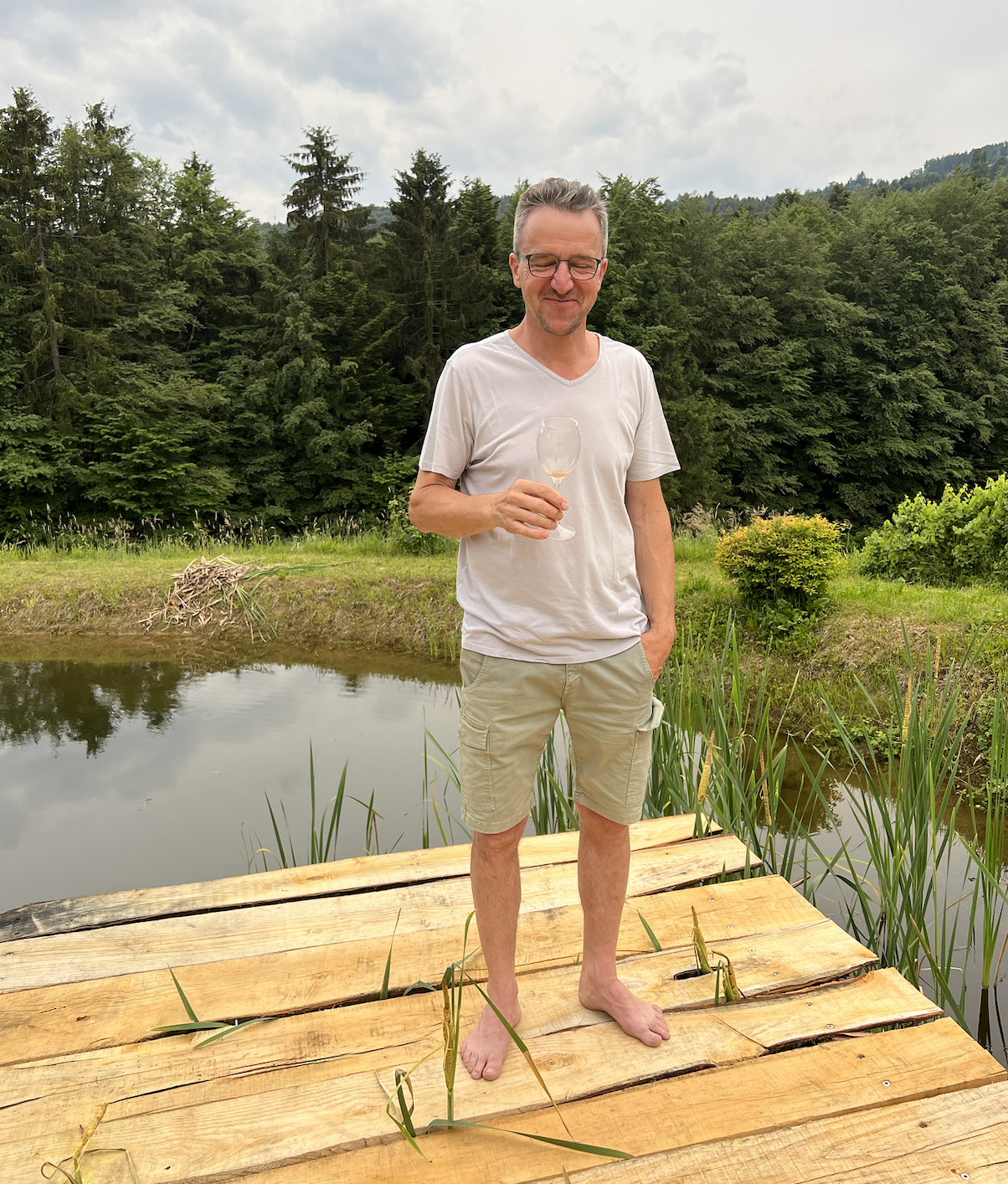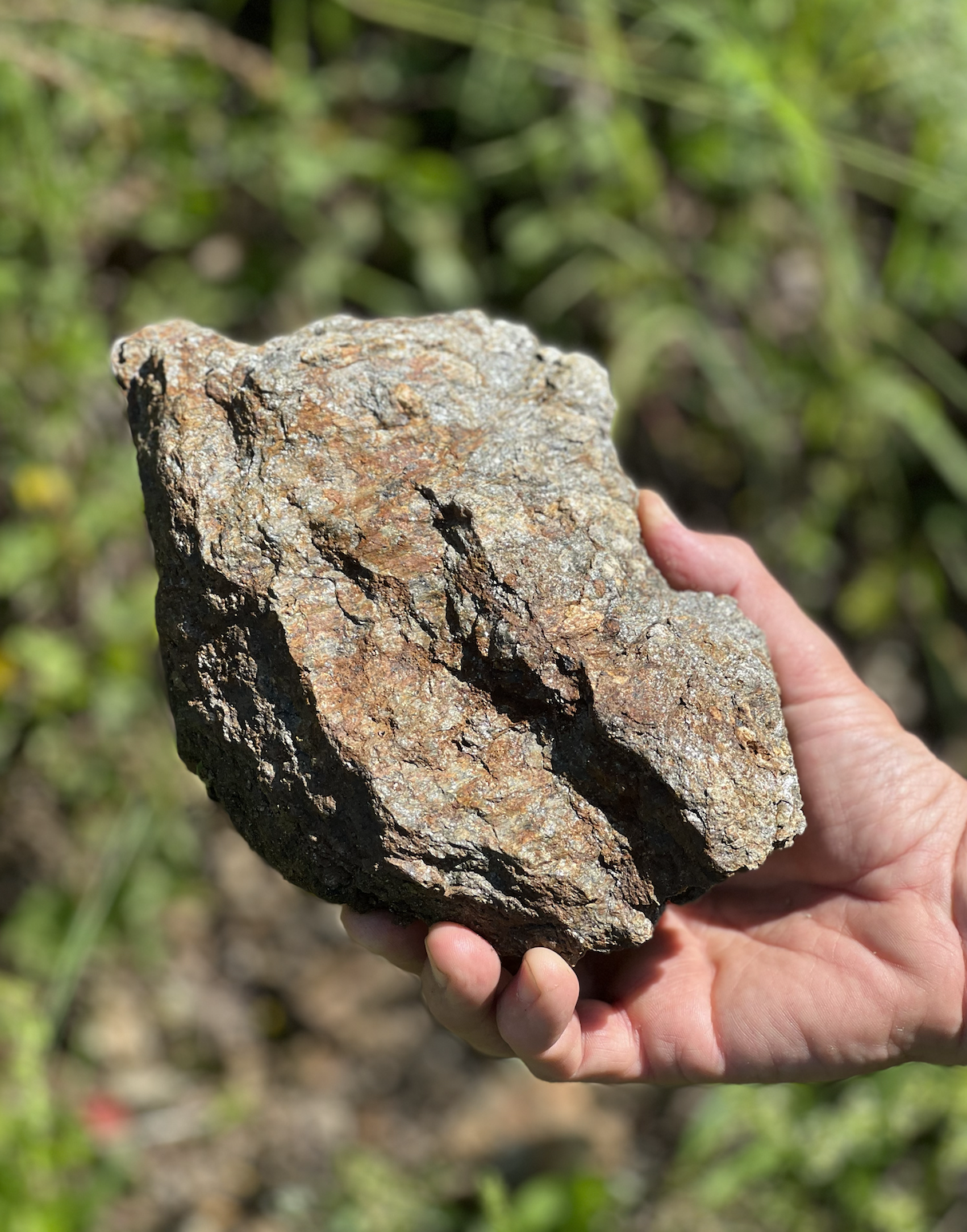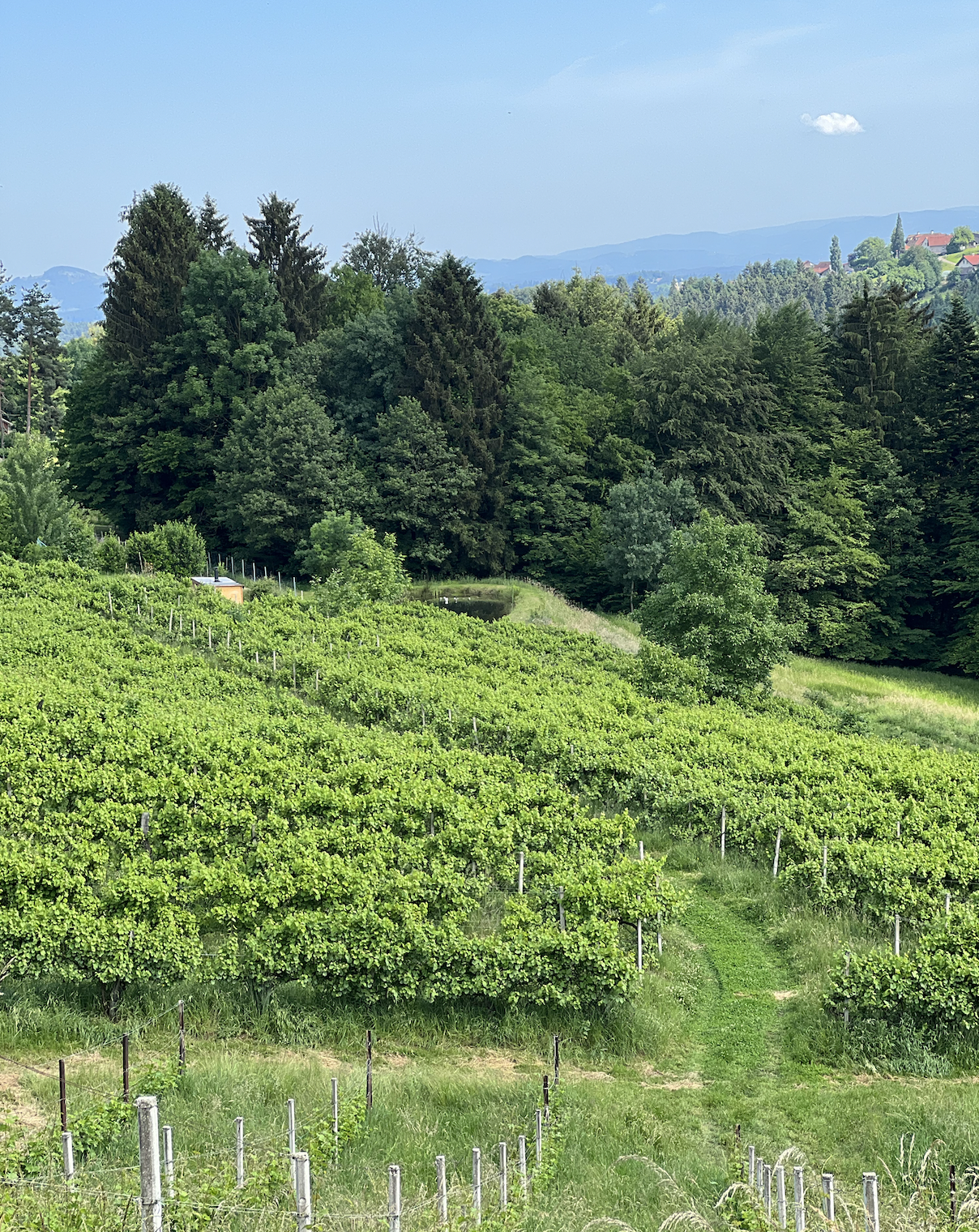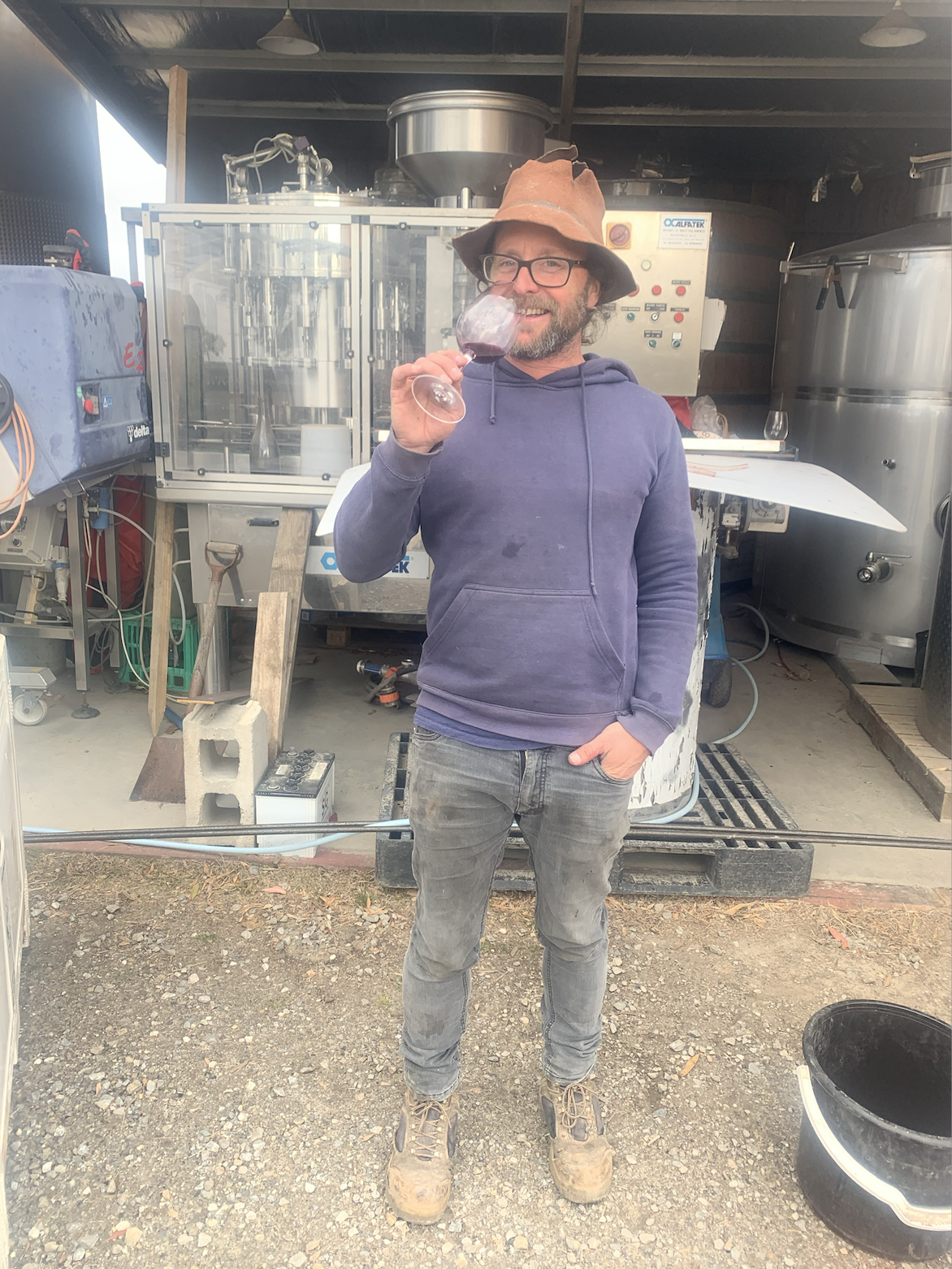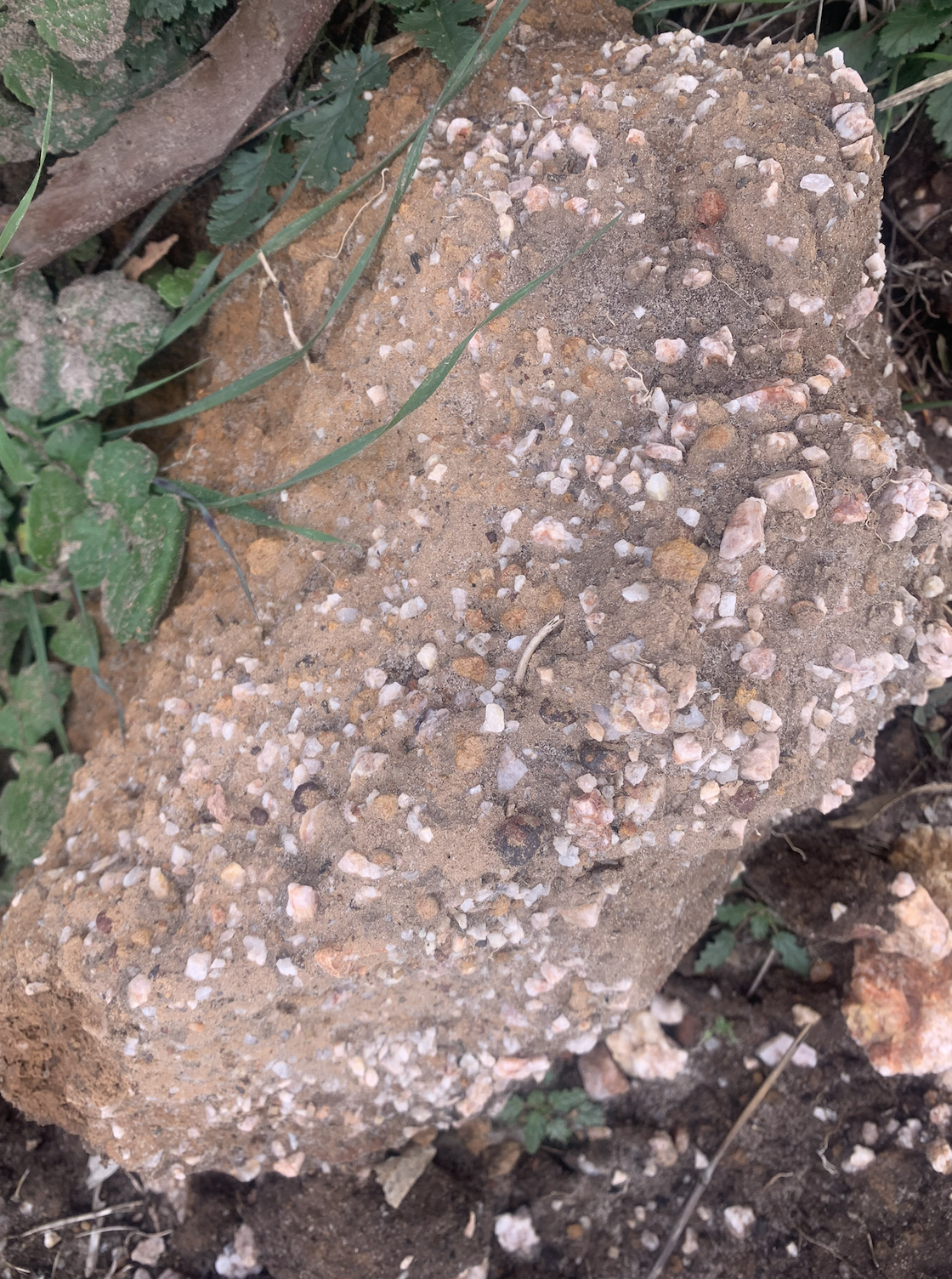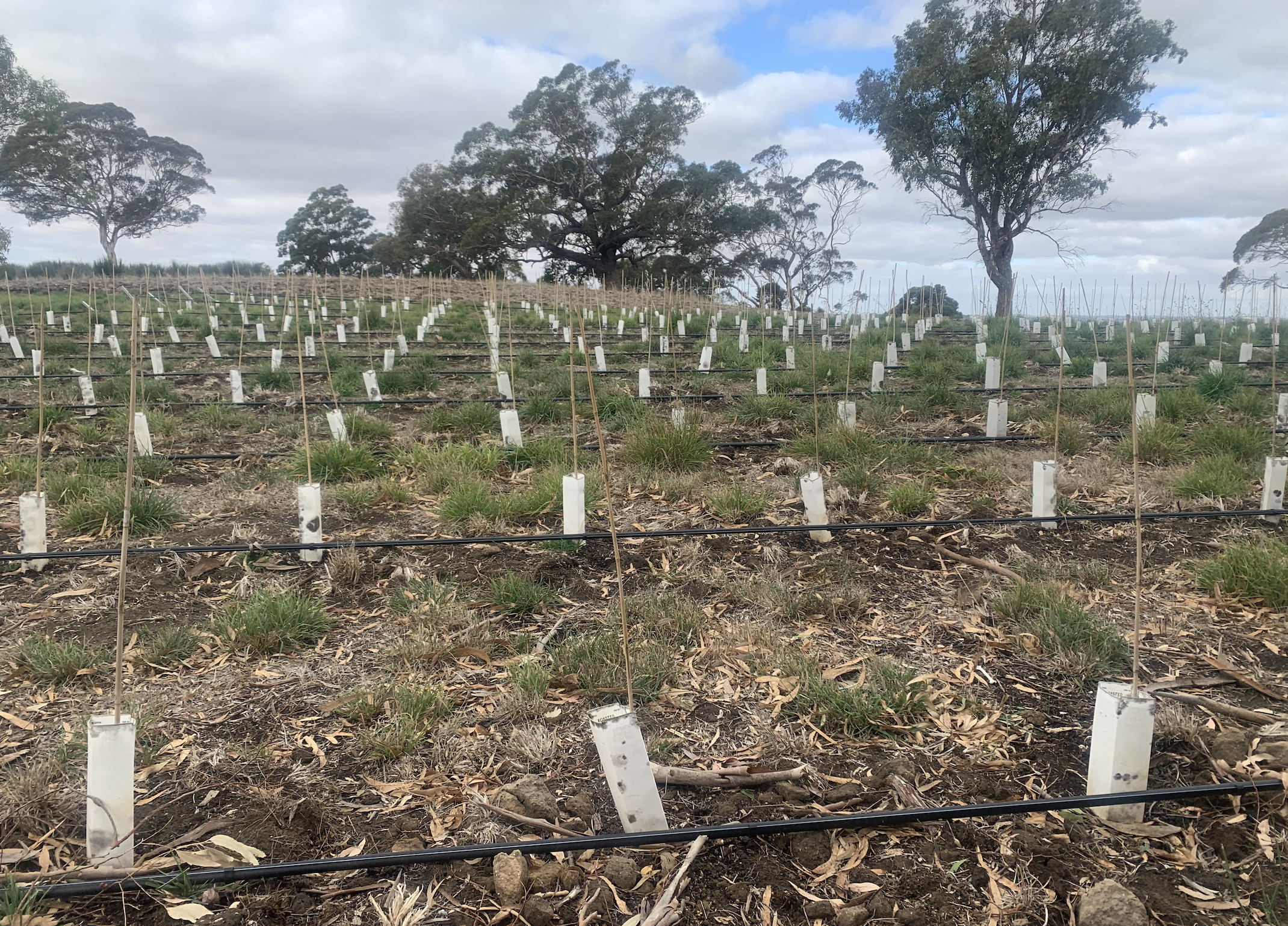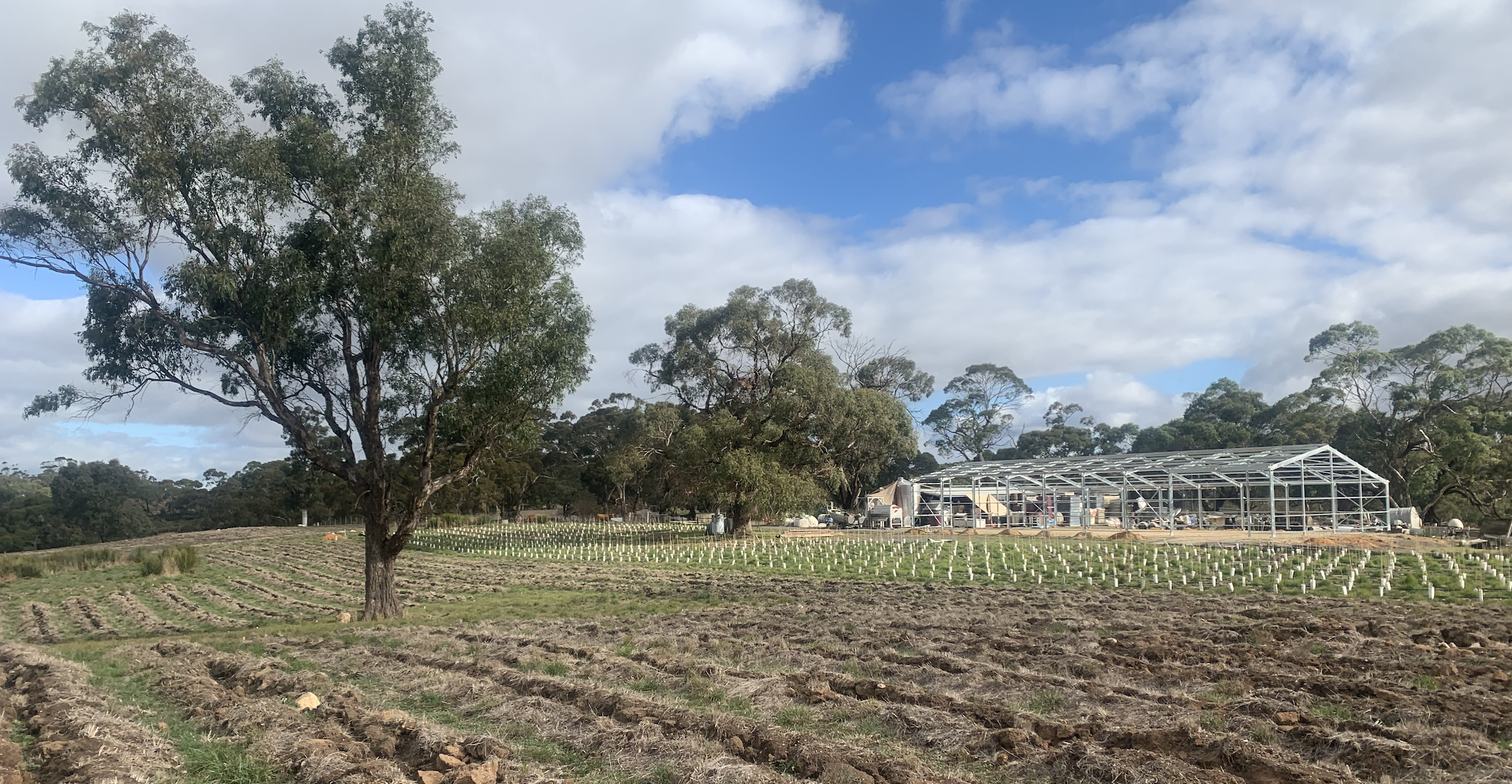A tale of two winemakers and their grapes
A story of place is inevitably one of very specific climatic and geographic characteristics. The grape, however, remains a moveable feast, travelling with the whim of the farmer/poet/sage from one mountainside to another, from one side of the world to another; some they express their terroir with great verve, others quietly adapt to any environment. Looking beyond the great love matches of the vinous world - as Nebbiolo is to Barolo; Pinot Noir is to Burgundy - what role does the grape play? This month we talk to two vignerons on opposite sides of the planet to get a grasp on how the grape sings in their sphere.
A story of Austria and Australia …
The Styrian hills of Austria are particularly beautiful, with verdant hillsides that speak to the area’s high rainfall and fertile soils. While the climate is cold, the hills have a long history of winemaking and drinking: from the Celts (grape seeds have been found in nearby graves dating as far back as 400BC), to the impact of marauding Romans (considered the first to actively tend the vines) and reigning monarchs (such as Joseph II, who introduced the Buschenschanks and their traditions of vigneron hospitality in the 1700s).
These picturesque hills are home to an indigenous grape known as blauer wildbacher, a small, late-ripening red grape. These hills are also home to Franz Strohmeier: “When we planted this grape in our vineyard I was 5 or 6 years old,” says Franz. “I remember putting water into the holes for the plants like it was yesterday … but it was 50 years ago.” These are fields that Franz is still farming, a grape that still speaks to him, or indeed sings to him.
The grape is thought to be a near direct descendant of white heunisch (gouais in the French leaning countries), the great-grandmother (or even great-great) to grapes including chardonnay and gamay. The other parent, a wild grape, is thought to be extinct. It is the seeds of the blauer wildbacher that were found in the Celtic graves, making it one of the most ancient examples of an indigenous grape still in commercial use. It’s high acidity and tannic structure lend balance to the local Schlicher, a rosé style wine made in a region that is too cold for deeper reds.
Alongside the blauer wildbacher - which Franz estimates as about 50% of his grapes - Franz has plantings of both pinot blanc and sauvignon. The sauvignon, far from its homeland in the Loire, was brought across during the Napoleonic wars and seems to particularly enjoy the similar latitude and soils. His pinot blanc (known in German as weißburgunder, a nod to its Burgundian roots), however, is more modern tale. “For more than ten years now I’ve been working with resistant grapes, back crossed with hybrids,” says Franz. “I know a lot of wine makers who are very distanced from these grapes, I don’t know really why. If a pinot blanc is growing here on my field, on my nice soil, and the circumstances that I have, then we don’t have to compare it to the pinot blanc from, let’s say Alsace, they’ll be different every time.”
In Australia and, for the sake of this story particularly the Barossa and Eden Valleys, it was introduced grapes that found their way into the varied soils and warm climes of the region. (Tom Shobbrook points out that while there are native grapes of the Cissus genus in Australia, the majority are found in the tropics, or found planted around Sydney’s suburbs, rather than in the vineyards of Australia.) While we’re never talking more than a comparatively paltry 180-odd years of industry, these are vines that were largely spared the ravages of the phylloxera louse and thus are some of the oldest vines on original European rootstock.
“When they first started planting fruit in the Barossa it was mostly for fortified wines,” says Tom. “A lot was going back to the Empire and so needed to be fortified to survive the heat through the Tropic of Capricorn, particularly as there was no glass here and it was cask only.” In fact, the era of oxidative styles and their grapes, many produced in a negociant style, grown by smaller land holders and sold to big national and international companies, continued in the region for the following hundred odd years. It was in the early 1980’s, when the South Australian government conducted a Vine Pull scheme – a knee-jerk reaction to grape over-supply - that a new movement started to take place. Out went much of the old vine mataro, grenache, syrah, palamino, muscat, likely along with semillon, chenin blanc and riesling. In revolt, in came a number of smaller wine makers, banding together to hold to what they could and reimagine the possibilities for the region.
While, of course, there remained some older plantations of syrah (think Penfolds and Henshke), it was not until the early ’90s when the more diverse red wine styles started to gain recognition, eventually leading to the boom of the big, boisterous shiraz of the following decades. In 1998, a young Tom joined the action, planting syrah on his family farm. He waited a couple of years to get the vines up to the wire and then, in 2000, left for the greener pastures of Italy.
Shobbrook and Strohmeier …
The shiraz planting was in step with what was happening in the Valley, but Tom’s time in Italy showed him another dance. “I was lucky enough to go to Chianti and work. We were up in the mountains and I just fell in love with Italy,” says Tom. “I was tasting a lot of European wines, from quite classic things like Burgundy and Bordeaux to more obscure things. It was so exciting to look at the plethora of wines that were there.”
“We were in a small village called Gaiole in Chianti, with vineyards ranging from 450 to 650m elevation. Most of the work was in the vineyards, with only a very small amount in the winery; I was learning about how that structure of tannin really sets the wine up, particularly with sangiovese, and how to stabilise them using the grape’s natural tannin and acidity, finding balance. It’s got a big part in my heart, that grape.”
While Tom was skipping through the Chianti mountainside, Franz, too, was tasting and learning from his experiences. “The first few years I worked with my father, we were farming in the same way I learnt in school, that’s to say conventional wine growing and in the cellar,” says Franz. “We were subscribed to a group that received some of the most expensive wines and Champagne to taste.” It was a time when additions were rife in cellars; the more Franz tasted, the more boring sameness he recognised in the flavours.
“I was asking, where are we going with this, what is the purpose?” says Franz. “I started thinking more and more about how could I have the most impact from the region, the soil and of course the personality of the grape. On that way, I sadly lost the connection to my father. We rented most of the vineyards from him (as he was in the age of retirement), but I started to introduce organic farming and later wines with low intervention and no sulfates.” Along with wife Christine, they started making wines they were truly proud of, first with the sparkling red Schlicher in 2005 and in 2007 his label Trauben, Liebe & Ziet (Grapes, Love and Time) using various varieties depending on the vintage: pinot blanc, sauvignon, the Austrian Zweigelt, plus some chardonnay and muscat.
Plantings and personality …
Around this time Tom was preparing to leave his mountainous paradise to return to the Barossa. He, too, had organics in mind, and while his heart had been captured by sangiovese, he had the shiraz to tend to (and now the merlot his Mum had planted and a bit of mouvedre they grafted). Looking to some of the other hotter climate wines in Europe (such as Tavel), they worked with the syrah to create a wine that was elegant, soft and refreshing; less alcohol, more drinkability, rather than just big and bold. “I’d realised that shiraz isn’t necessarily a grape that is well suited to that warm, dry climate. On a very hot day it likes to pull the energy back out of its berries, instead of shutting down and holding the fruit there, like a grenache would,” explains Tom. “But we always tried to make wine that we want to drink, with what we had available at the time. With such a huge amount of syrah/shiraz we were trying to find a way to make that interesting and fun and I suppose we did that with our Poolside.”
Nonetheless, the Barossa was still being touted as shiraz first and foremost. Old vines were still being pulled out. “There were varieties like semillon and muscat, grenache and cinsault, varieties that weren’t popular,” explains Tom. “The Barossa is still mostly growers growing fruit for larger wineries, and so if the wineries weren’t buying they were pulling them out and planting new vineyards … so we [along with Tom’s wife Emma] found some old chenin blanc, some old riesling, grenache, and a bit of old shiraz, muscat, semillon and started making wines from that.” It was a fortuitous side-project as, in 2018, when the family farm was sold Tom and Emma found themselves without any fruit except for these negociant plots.
Now the pair have bought their own farm in Flaxman Valley, which is geographically more Eden than Barossa. “We’ve planted quite a diverse range of stuff using original rootstock: sangiovese, mammolo, mondeuse, malbec, malvasia, moscato, cinsault, trousseau, gamay, pink muscat, we may try a little bit of chenin in the next two years – that might be as diverse as we’re going to get here on such a small farm. I think Sangiovese can work, but my tie to Italy is probably making me a little biased, but I think the malvasia could work well here too,” Tom says. “The wines are completely different in the way they ferment up here, because it’s so much cooler [than the Barossa], we get beautiful long, slow fermentations. In time the fruit that we can ripen on the farm is going to be delightful because it’s going to have this beautiful long slow ripening period too.”
While the grape varieties differ, the desire for diversity is echoed on the other side of the world. “We are used to our European grapes,” explains Franz, “it’s a long selection. What I aim to develop is a type of permaculture too. If I don’t have to use a tractor then I can plant vegetables and fruit trees in between. The further away from monoculture then everything will happen easier again, the symbiosis of diversity is most important I think.”
Like Tom, Franz is not one to blindly follow the traditions of his region. “It’s like with humans, when I meet someone and the character fits,” explains Franz. “If we go on the feeling, how is the body reacting to it – how is the behaviour after you drink, how is the behaviour with a meal. It’s good to allow it and be open minded. Sometimes we lose our inner voice. Being prepared always to be open for a new way, this is especially how we work in the vineyard what I more and more recognise is important for my own life too.”
For Tom and Emma, that inner voice is somewhat yet to be tested. “We’re six years in and we’re just starting to get our first crop of malvasia from the farm. You could plant Riesling on ten different sites and you’d get ten different flavours, but you could plant merlot on the moon and it would taste fairly similar! I don’t yet know if the muscats are going to give us different characteristics, or how the sangiovese is going to look here. Of course, it’s quite different soil to Chianti. We have a very small amount of schist on the farm, but not very much, a little bit of sandstone … and even though our elevation is similar, here we’ve got this slow rolling undulation, where up in Italy there’s much more mountainous, more rivers, streams and forest which helps with moisture and humidity through the year. The main tie between the two regions is probably my hands working on the farm and maybe bringing knowledge of Italy to here.”
It’s a great vinous experiment, rooted in past experience, knowledge and just a little romance. “You know when you listen to music,” says Tom, “and it takes you back to a time, you get goosebumps of the fun you had? For me certain grapes – particularly sangiovese, tribbiano and malvasia - really give a connection back to Italy. Being able to have sangiovese and malvasia on the farm and in time maybe finding tribbiano to complete the connection. When you’re working on the farm in Australia you’re thinking back to your time in Italy its reminding you of some time you spent with friends working in the mountains in Tuscany. It’s not a shit memory!”
NB – Franz and his Dad patched up their relationship, a little time, understanding and a little more time. As with the vineyard it is with life.
